What's the Difference Between Standing Seam and Exposed Fastener Metal Roofing?
Posted by Derek Gamble - SnoBlox-Snojax Specialist on Apr 18th 2025
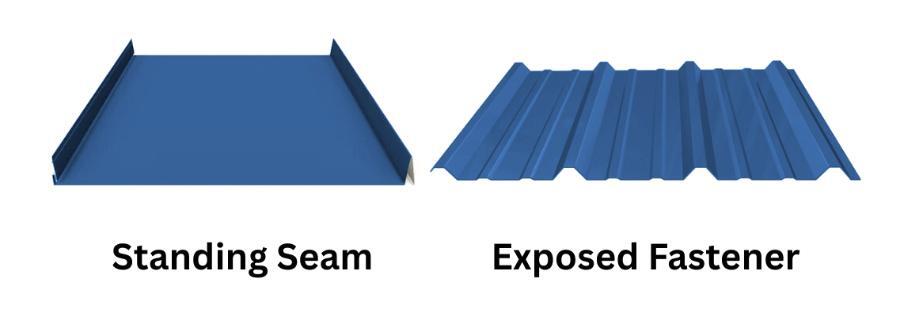
They say that a woman's hair is her crowning glory. It sits atop her head and adds to her beauty. You could use a similar analogy to describe your roof as the crowning glory of your home or building. It similarly sits on top of the structure, adding beauty to it. Often, the roof of a house or building is one of the first things you notice. Is it shiny? Is the color unusual or eye-catching? Is the shape and pattern of the ribs attractive, or does it make the roof look too busy? Most of this comes down to personal preference. Still, with the long lifespans of today's metal roofing systems, it is worth considering because you will have it for a while. After all, some metal roofing may even outlive its owners if installed and maintained properly. Metal roofing has two main categories: standing seam and exposed fastener systems. Both have distinct advantages and disadvantages. Understanding those differences is crucial before deciding which style best suits your needs. Everyone wants their roof to look good, but it's even more important for your roof to perform well during the many years and different weather conditions that it will face over its lifespan. There is more to selecting the right roof than just picking a pretty color to match your shutters and trim. In this guide, we'll compare the designs, costs, performance, and suitability of these two roofing styles to help you make an informed decision.
The First Metal Roofs In The USA
Metal roofing has ancient origins, with early civilizations utilizing materials like copper for durable coverings. One notable instance is Sri Lanka's Lovamahapaya Temple, which featured copper shingles as early as 300 B.C., while Rome's Pantheon similarly employed copper cladding resembling modern metal roofing techniques. Metal roofing emerged as a premium option in colonial America. Craftsmen made these early roofs from lead or copper materials. Wealthy households, churches, and public buildings primarily reserved these roofs because of their expense and intricate installation. When looking for instances of early roofing installations, Philadelphia's Christ Church is a great example. They established this church in 1695. It was the inaugural Anglican parish in Pennsylvania. Its roof was constructed of lead and added in the early 18th century. The building's critical fire-resistant features allowed it to endure the Great Fire of 1721. Nearby structures weren't as fortunate. As settlers moved westward searching for adventure, new beginnings, and gold, metal roofing became increasingly practical for frontier structures, offering resilience against heavy snow and extreme weather. Over time, innovations in production and materials diversified metal roof designs, transforming them into a widely adopted solution across the United States.
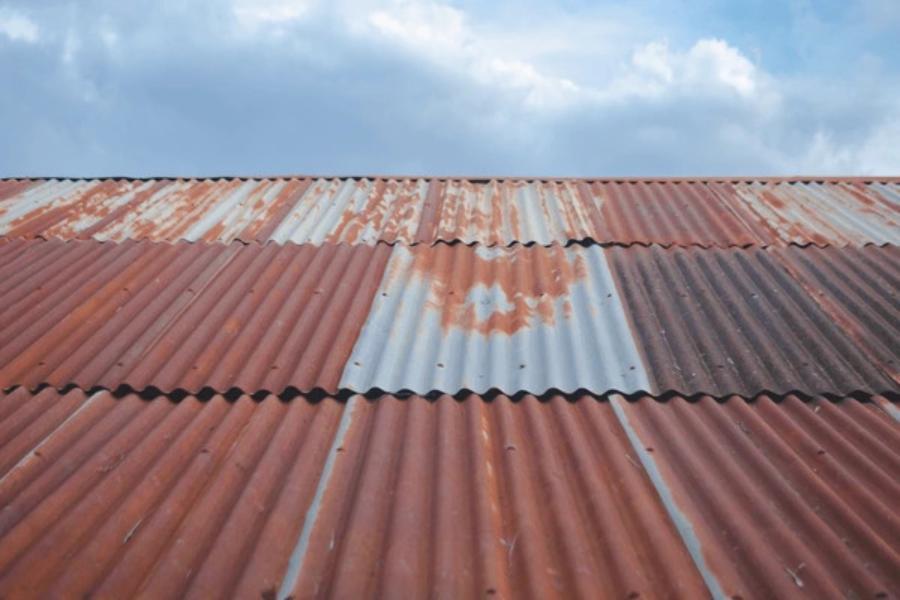
Riding The Waves Of Corrugated Roofing Towards Affordability
By the late 1800s, corrugated metal roofing began to emerge and spread across America. Craftsmen constructed these panels from galvanized steel. These lightweight, economical roofs gained popularity due to their simple installation and versatility. They soon sheltered diverse structures, from agricultural barns and storage sheds to urban factories and commercial facilities. A landmark moment occurred in 1883 when the Dakota Territory Capitol Building became the first major structure to feature this innovative roofing solution. They constructed the roof of this building from corrugated iron sheets. John A. Roebling's Sons Company manufactured the panels. This company later gained notoriety for engineering the Brooklyn Bridge. This pioneering application signaled a shift toward accessible, user-friendly roofing solutions. By the early 1900s, corrugated metal had become a widely accepted building material, valued for its practicality and affordability in rural and city settings. Further advancements arrived in the 1920s with asphalt-coated sheets, which enhanced weather resistance and reduced corrosion, solidifying the material's reputation as a durable, cost-efficient alternative to conventional options.
Standing Seams At The Sock Hop?
Standing seam metal roofing emerged in the 1950s as a modern alternative to corrugated roofing, though its origins trace back further. The Armco Steel Corporation pioneered the first contemporary standing seam panel design. They introduced it at the 1933 Chicago World's Fair, building upon earlier iterations of the technology. This innovation gained broader traction in the 1960s as the system became more refined and widely adopted. Homeowners and businesses increasingly favored standing seam roofs for their sleek, visually appealing design compared to the industrial look of traditional corrugated metal. The durability and energy-efficient properties of metal roofing contributed to its popularity in sustainable construction practices. This popularity solidified its status as a practical and environmentally conscious choice for residential and commercial buildings.
Modern Day Metal Roofing Is Here To Stay
In efforts to reduce environmental impact, modern metal roofing has become an even more sustainable solution, often manufactured using recycled material and then fully recyclable after decades of use at the end of its life. These roofs enhance energy efficiency by deflecting solar heat and lowering building cooling demands. Recent advancements have expanded their appeal through innovations like metal shingles that replicate the aesthetic of classic slate, clay, or wood roofs while maintaining metal's signature strength and thermal performance. Once a premium material limited to affluent colonial-era properties, metal roofing offers cost-effective, long-lasting protection against weather extremes. Its minimal upkeep and evolving technologies and designs ensure its enduring popularity as a resilient, eco-friendly choice for residential and commercial structures.

Metal Roofing Design and Construction
(Standing seam) or (hidden fastener) metal roofing features interlocking panels with raised seams that conceal fasteners or clips beneath the surface. The panels (float) above the structure without penetrating the panel itself. Multiple hidden metal clips mechanically fasten to the roof decking, traveling up the slope, and provide support for the panel, which is then attached to the clips with a male/female interlocking connection secured with various seaming tools. These designs offer a sleek, modern appearance and enhance weather resistance by eliminating fastener penetrations, which could lead to roof leaks that can damage the roof structure over time. Many standing seam panels can be produced on-site in lengths, sometimes up to a staggering 250 feet in length, reducing seams and enhancing durability. Panel widths can vary greatly, with standard widths typically between 12 to 24 inches wide, with some even spanning up to 42 inches. Custom dimensions are often available by special request, depending on the manufacturer. Standing seam roof panels are most commonly available in 24 or 26-gauge thicknesses. Some manufacturers do offer a 22 gauge option, however. Various seam shapes, widths, and heights suit any taste. However, it is important to mention to your contractor if you plan to install clamp-on snow guards or snow rails. Certain shapes and wider seams are often incompatible due to an inability to meet proper torque settings. Discuss snow retention with your contractor early to avoid losing options after roof completion. Standing seam metal roofing offers an appealing aesthetic and superior performance. These features make it the preferred choice for high-end residential and commercial projects.
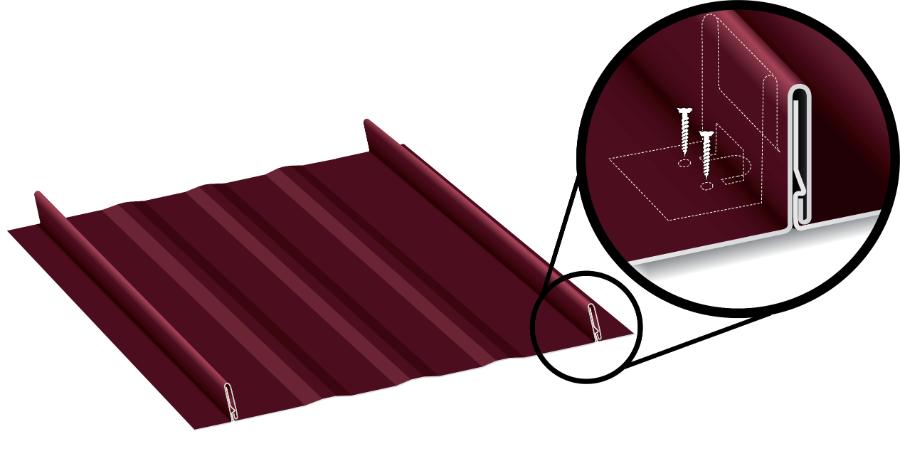
(Exposed fastener), (screw-down), or (corrugated) metal roofs work differently. These mechanically fastened panels are secured directly through the metal face into the roof deck, purlins, or framing. Exposed nails or screws secure these panels during installation, setting them apart from concealed systems that hide fasteners. While the fastener heads remain visible, they can often be color-matched to the panels for a cohesive look. A typical exposed fastener roof will feature thousands of these penetrations and fasteners. The panels, typically made of steel or aluminum, usually feature ribbed, corrugated, or raised designs (e.g., R-panel or 5V crimped styles) to enhance structural strength and aesthetic appeal. This roofing method is generally more affordable than standing seam systems due to wider panel coverage (up to 36 inches), thinner gauge metals (26–29 gauge), and simpler installation processes requiring fewer materials and labor. However, the exposed fasteners are vulnerable to wear from UV exposure and thermal expansion, which can loosen screws over time and compromise the waterproof seal. Underlayment for exposed fastener roofs is also extremely important, whereas it isn't as critical for a standing seam roofs. While suitable for agricultural buildings, garages, or unheated structures, regular maintenance is essential to address potential leaks caused by fastener displacement or degraded gaskets. Despite these drawbacks, exposed fastener roofs remain cost-effective for projects prioritizing initial savings over long-term durability.

There is a roofing style that falls somewhere between standing seam and exposed fastener roofing. The industry refers to these panels as Nailstrip panels. While they are considered a standing seam family member, their attachment method is closer to exposed fastener roofs. With these panels, you still get the visual appeal of a standing seam roof. Instead of relying on the clip systems of traditional standing seam panels, it utilizes a flange along its length known as a (fastener flange) or (nail flange) with holes or channels for the fasteners to go through. These panels then snap together over the fasteners, hiding them from view. These panels are very popular today with contractors and DIYers who desire the look of a standing seam roof with the ease of installation that comes with an exposed fastener roof. Many call this roof panel style (the best of both worlds). This panel requires no special tools or expertise for a desirable outcome.
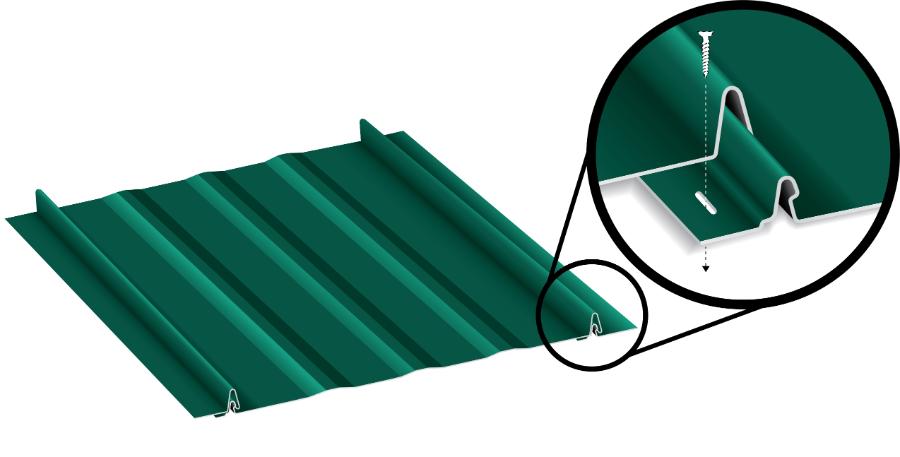
Investment and Durability: What to Expect Over Time
Now, let's talk about the cost and longevity of these systems. Standing seam metal roofing comes with a higher upfront cost due to typically using heavier gauge materials (24 gauge or thicker) and premium PVDF (Kynar 500) paint finishes. The specialized installation techniques also contribute to the increased cost, especially regarding trim installation. Due to the floating nature of this kind of roof, ridge caps and trim require additional pieces and steps. Industry experts estimate that a standing seam roof will normally require 2-3 times as much trim as an exposed fastener metal roof. This results in significantly longer installation times and increased labor costs. Because of their narrower dimensions, standing seam roofs often require purchasing twice as many panels as an exposed fastener roof. However, standing seam systems can last 50+ years with minimal maintenance. This fact makes them a long-term investment. The concealed fasteners prevent water intrusion, and weathertight warranties are often available, providing peace of mind for homeowners. A rough estimate shows that standard standing seam roofs cost around $8-$14 per square foot.
Exposed fastener metal roofs typically cost less because they often use thinner metal sheets (26–29 gauge) and basic paint finishes like silicone-modified polyester. Mechanically fastened metal roof panels can often reduce labor costs as a result of being wider and easier to install. However, this system typically lasts 20–30 years and requires regular inspections and fastener replacements to address loosening or corrosion. These systems are much more straightforward regarding installation and require much less trim. Labor costs will be significantly lower with this style of roof. Industry experts agree that this type of roofing is much easier to handle and, as such, is more user-friendly for DIYers. This ease of installation will also make finding installers in your area much easier than someone desiring a standing seam roof. Not all contractors and roofers are comfortable with the added complexity of standing seam roofing and choose to avoid projects with it. A rough estimate shows that standard exposed fastener roofs cost about $4-$12 per square foot.
An Environmental & Energy Efficiency Showdown
Standing seam metal roofs outperform exposed fastener systems in energy efficiency and environmental sustainability. Their concealed fasteners and uninterrupted surface minimize heat transfer, enhancing their ability to reflect sunlight and reduce indoor cooling demands. The sleek, unbroken design allows for better thermal performance and compatibility with modern reflective coatings, which amplify solar reflection. Standing seam roofs are constructed from recyclable materials and boast exceptional durability, often enduring decades without replacement. This longevity reduces material waste and lessens the environmental strain of manufacturing, transportation, and disposal cycles. Their low-maintenance nature further supports sustainability by limiting resource use over time.
Exposed fastener metal roofing, although initially more affordable, involves compromises in both performance and environmental sustainability. The visible screws create thermal bridges that allow heat penetration, diminishing their ability to regulate indoor temperatures effectively. Though some models include reflective treatments, the inherent design limitations hinder optimal energy performance. These roofs also use lighter-gauge materials and require more frequent upkeep due to fastener wear, leading to a shorter service life and increased resource consumption. While practical for temporary structures or budget-focused projects, they lack the enduring environmental advantages and energy-saving potential of standing seam alternatives.
A Head-to-Head Look at Performance & Longevity
When evaluating roofing options, performance and longevity are essential considerations. Standing seam metal roofing demonstrates exceptional resilience in harsh weather due to its concealed fasteners and interlocking panels, which enhance wind resistance and prevent water infiltration. The raised seams minimize moisture accumulation, while expansion joints allow for temperature-related movement, reducing the likelihood of leaks. Standing seam panels are especially useful for roofs with shallow roof pitches up to 3:12, where precipitation may take longer to shed. These systems also offer non-combustible Class A fire protection and impact-resistant properties, making them suitable for areas facing extreme climatic challenges. When working with a standing seam roof, especially one in a thinner gauge, there is the potential for your panels to suffer from oil canning, which looks like ripples in the panel. This condition sometimes results from standing seam panels expanding and contracting with temperature changes and not having enough flexibility or (give). This effect is not a structural problem. It is just an aesthetic issue. Choosing thicker gauge panels can aid in the reduction of oil canning. Standing seam roofing has a high wind resistance. It is often able to handle even hurricane-force winds without fastener failure. As stated earlier in this blog, standing seam systems can last 50+ years with minimal maintenance. Normally, occasional inspections and removal of surface debris are sufficient.
In contrast, exposed fastener roofs exhibit notable limitations. Their visible screws may gradually loosen, creating vulnerabilities for water penetration and potential leakage. Although available in diverse designs to accommodate aesthetic preferences, these systems lack the polished, contemporary appearance of concealed fastener alternatives. While intermediate ribs in exposed fastener panels help mitigate surface distortion (oil canning), they cannot replicate the streamlined visual appeal of standing seam configurations. Manufacturers rate most exposed fastener panels for winds up to 140 mph. Unfortunately, this rating relies heavily on the fasteners' integrity during installation. Exposed fastener panels can last anywhere from 20-30 years, but the maintenance requirements are more involved. It is critical to perform regular inspections and re-tightening of the roof's fasteners while also cleaning the panels of debris and replacing any sealant where needed.
Which Metal Roofing System Is Right For Your Project?
When determining the best uses for each roofing system, standing seam metal roofing emerges as an optimal solution for upscale residential properties, commercial structures, and areas experiencing extreme climate conditions. Its strength, weather resistance, and sleek appearance position it as a favored option for those prioritizing longevity and visual appeal. Conversely, exposed fastener systems are a practical alternative for agricultural storage facilities, industrial complexes, cost-sensitive home renovations, and interior uses such as wall or ceiling linings. This approach provides economic benefits for projects requiring reliable performance over shorter timelines or where budget constraints play a significant role.
When deciding between standing seam and exposed fastener metal roofing, key factors include budget, visual preferences, and performance needs. Standing seam roofs deliver superior durability and a sleek, modern appearance, making them a strong choice for long-lasting installations. Exposed fastener systems present a more affordable initial investment suitable for shorter-term projects but demand greater upkeep over time. Climate conditions, architectural design, and maintenance capabilities should guide your decision, as each option caters to different priorities. Both roofing styles provide effective solutions tailored to specific project requirements, whether focused on aesthetics, longevity, or upfront costs. Now that we've reviewed the information you need, the next steps are up to you and your contractor. Don't forget to mention the snow guards.
Do I Need Snow Guards For My Metal Roof?
Buildings with metal roofs face unique winter challenges, especially the risk of dramatic snow avalanches that can endanger people, pets, and surrounding property. Customers should always consider snow retention systems on pitched roofs in locations that experience winter precipitation in the form of ice and snow. Choosing the correct snow guards for your project can be intimidating, but we make it easy. Our resource pages, spacing charts, published pricing, and informative guides help take much of the guesswork out of system selection. Visit our Snow Guard Compatibility by Roof Manufacturer resource page for detailed information on which snow guards and snow retention systems are compatible with your metal roof listed by the manufacturer.
Snow Guards For Standing Seam Roofing
You should never install snow guards on standing seam roofs with mechanical fasteners that penetrate the panels. Doing so will typically result in loss of your manufacturer warranty, potential damage to the roof, and leaks. Clamp-on snow guards like our new SnoCleat RC and SnoCleat RCT mount individually to the panels without penetration. Our galvanized steel SnoBar and aluminum ColorBar snow rail systems mount similarly but in continuous runs. We also offer a line of polycarbonate snow guards in various sizes, shapes, and colors that attach to the panels with the industry-standard SureBond SB-190 adhesive. Some of our most popular models are the SnoBlox Deuce, Ace, and Icejax II, to name a few.
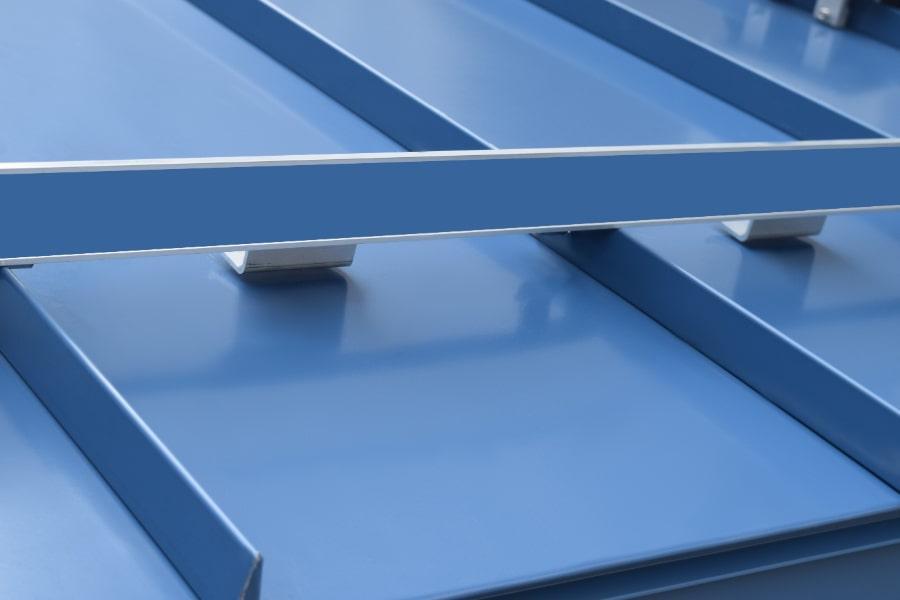
Snow Guards For Exposed Fastener Roofing
Exposed fastener roof panels offer more flexibility for snow guard installations. These mechanically fastened panels do not float and, as such, can be equipped with screw-down snow guards and rails while also being compatible with our adhesive mounted polycarbonate options. Most of those same polycarbonate guards can also be screw-mounted. Our SnoBar and ColorBar rail systems are compatible with these panels. Unlike our standing seam versions, they use screw-down brackets to accommodate various panel styles. We also offer a line of decorative-shaped stainless steel individual snow guards called SnowCatchers that fasten through the panels, as well as our newly introduced SnoCleat products.
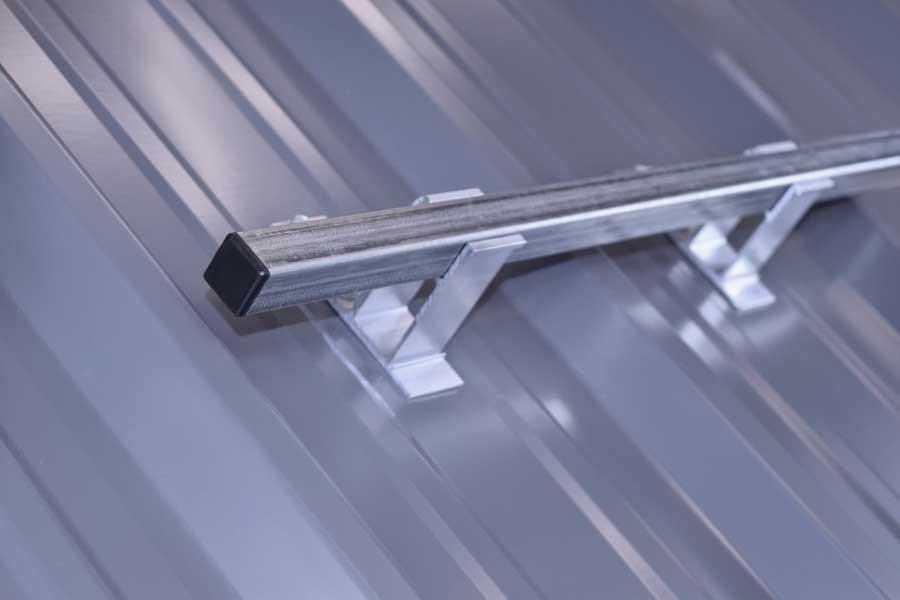
Disclaimer
The views, recommendations, and information presented in this blog are solely those of the author.


